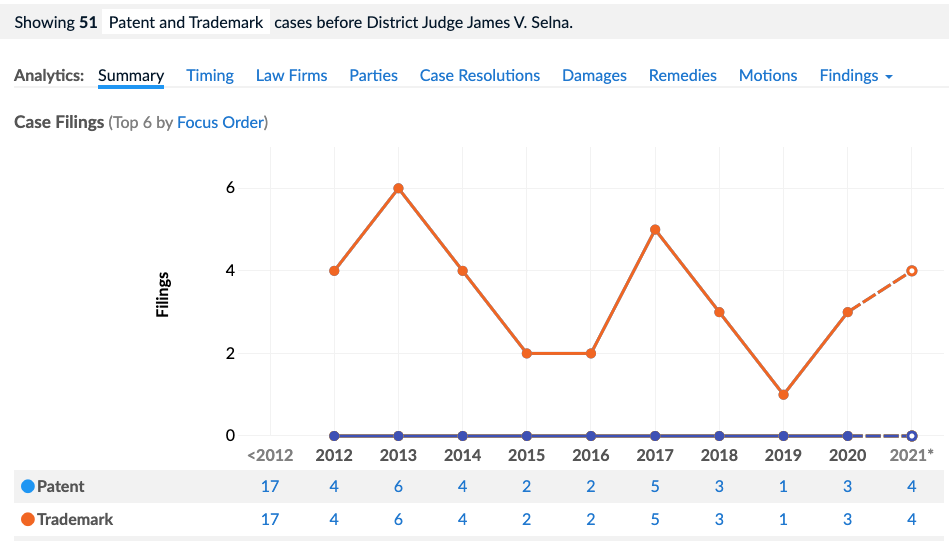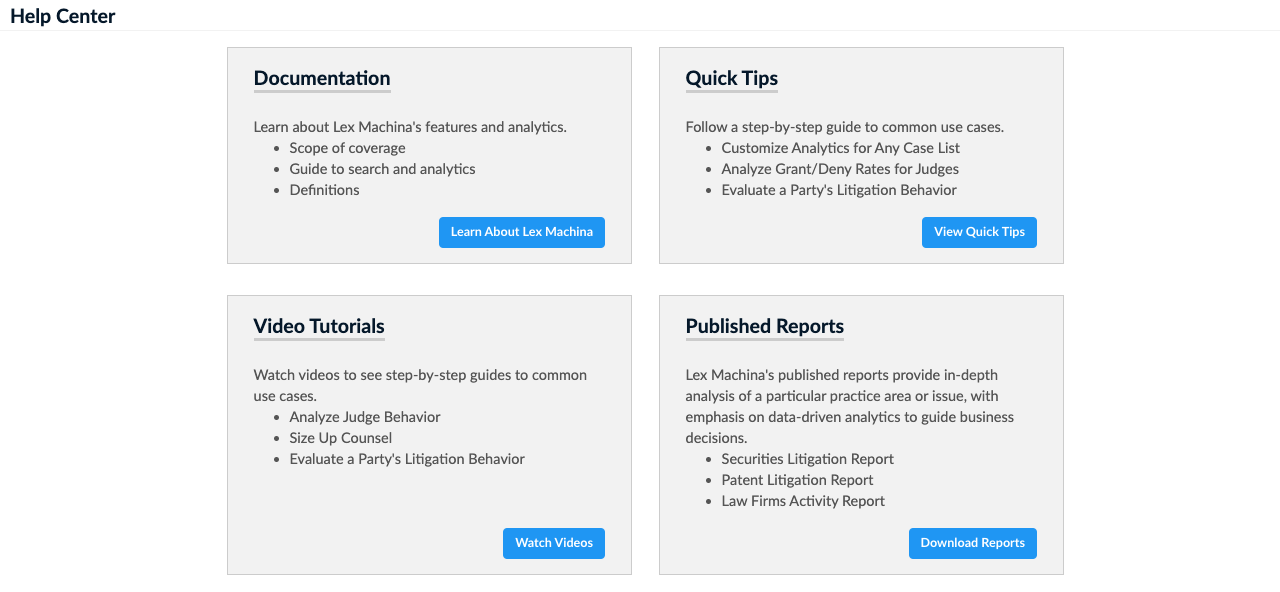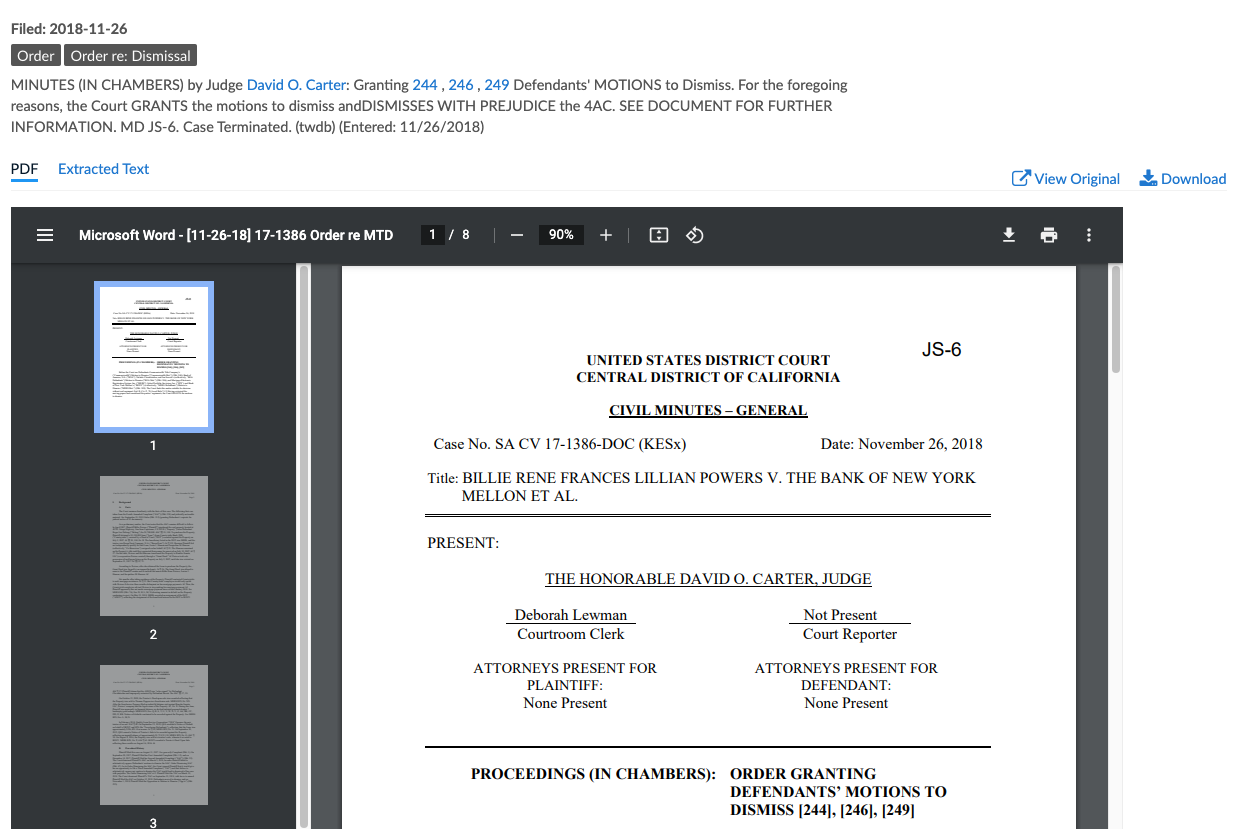Litigation analytics work best when comparing apples to apples, thus the most relevant data comes from cases that are like yours. In order to find similar cases, a litigation analytics provider must be able to accurately identify comparable cases. At Lex Machina, we build our datasets based on real-world litigation strategy questions, allowing practitioners to get the most relevant data quickly and easily. Here’s why finding cases like yours, and understanding what is included in that case set, is essential to winning cases and winning business.
Better Categorization, Better Data-Driven Results
At Lex Machina, we have our proprietary algorithms run over millions of pleadings documents to find cases that have the specific claims lawyers are looking for in 18 different practice areas. Additionally, our data team, which consists of attorneys and legal analysts, reviews cases to both make sure the categorization is accurate and add important case annotations which result in the most comprehensive and accurate dataset available. By adding and curating granular tags and filters, you can narrow down results to those cases that matter most to you.
Our data is different from other tools in two important ways: 1) claim specificity and 2) the ability to understand and confirm where the data comes from. Let’s look how these differentiators affect advising a potential client using data-driven decision making.
Claim Specificity
Lex Machina has over 100 practice-area specific case tags and 12 general case tags, all of which are used to filter cases with particular claims or attributes. We are able to tag cases based on the actual claims in the pleadings, because we download documents into our system and use machine learning technology to find claims based on the actual pleadings documents, rather than just metadata or docket entry text. Users are able to narrow down Patent cases to those that deal with an ANDA dispute, or Consumer Protection cases to only those with a claim under the Fair Credit Reporting Act. That way extra noise is not included in analytics, which may lead to incorrect statistics.
Example: An employment attorney has a potential client with a harassment case and wants to know how long it will take in the Southern District of New York.
Other tools only allow users to look at the broad category of “Employment” data. Looking at only Employment cases in the Southern District of New York filed 2009 to 2020 gives us some background information on timing.

Because Lex Machina lets users filter by cases with a harassment claim, we have even more specific information about timing in those cases.

In the district, harassment claims tend to take longer than Employment claims overall. The median time to trial was a full 175 days longer for cases with harassment claims (906 days vs. 731 days to trial in Employment cases overall). Without being able to filter to cases with similar claims, the attorney may give the potential client the wrong impression about how long this will take, and relatedly, how much it will cost.
As we can see, overly broad data can lead to incorrect conclusions, which practitioners absolutely do not want to pass along to a potential client.
Overlapping Practice Areas
When filing a complaint, plaintiffs don’t usually include just one claim. Overlapping claims are common, and Lex Machina’s analytics reflect this. For example, nearly 27% of Trademark cases also include a Contracts claim. Legal professionals need litigation analytics that allow them to see all cases with a specific claim that interest them, not just the ones that aren’t in a different category.
Judges have the opportunity to rule on all the claims in a case, not just the ones in a certain category. Therefore, looking at judge behavior relating to a specific claim is important. For example, if a judge ruled on a trade secret issue in a case, a practitioner researching that judge’s case history would want to see that case reflected in the Trade Secret statistics, even if that case also has a claim for patent infringement.
Example: A litigator wants to find all Patent cases in front of Judge James Selna of the Central District of California, as well as explore any cases that also include Trademark claims.

With Lex Machina, users can easily find 51 cases that have both Patent and Trademark claims. Then you can go through these cases to see what happened by viewing analytics on these cases as well as exploring the dockets of each case.
Other tools only classify cases into one category, which is simply not how litigation works. By shoehorning a case with patent and trademark claims into only one category, practitioners will be missing valuable data.
Trust But Verify
Lex Machina does a significant amount of work in order to provide the most accurate data sets available. Don’t just take our word for it — you can verify the data set yourself by 1) assessing the list of cases resulting from your search, 2) checking documents from the court, and 3) reviewing definitions in the Help Center. These transparency measures are important so you can understand and confirm where the data came from.
Case List
When researching a particular judge’s or counsel’s past behavior, one tactic is to jump right into past cases. Users want to be able to quickly and easily get to dockets and documents from the judge’s court or counsel’s past cases. Using our previous example, looking at Judge Selna’s 32 cases with Consumer Protection and Contracts claims, you can quickly look at the case list and click on the case name to go right to the case page and docket. Lex Machina has customizable columns and exporting, which give you the ability to take the work that we have already done and easily add relevant research.

Documents
Lex Machina uses documents to build its analytics, including creating case sets and tagging cases, as mentioned above. Additionally, documents are available in Lex Machina’s system, which allows users to fully understand a judge’s reasoning or style. A user can quickly see a granted motion to dismiss or temporary restraining order and devise case strategy accordingly.
Help Center
Our Help Center provides explanations for product features and filtering capabilities (tags, findings, damages, judges, counsel etc.). Users can find out whether state law claims are included in Employment cases (they are!) or what makes a case “Administrative” in Antitrust cases brought by the DOJ/FTC.

Cases in broad practice areas don’t all follow the same trajectory. Thus, litigation analytics give the best indication of what might happen in a case when looking at similar cases. With case specificity tools and verifiable definitions and explanations, Lex Machina is the only provider giving users the accuracy and transparency necessary to make data-driven decisions for their firm and their clients.
Request a live demo with one of our experts to understand trends in case like yours
